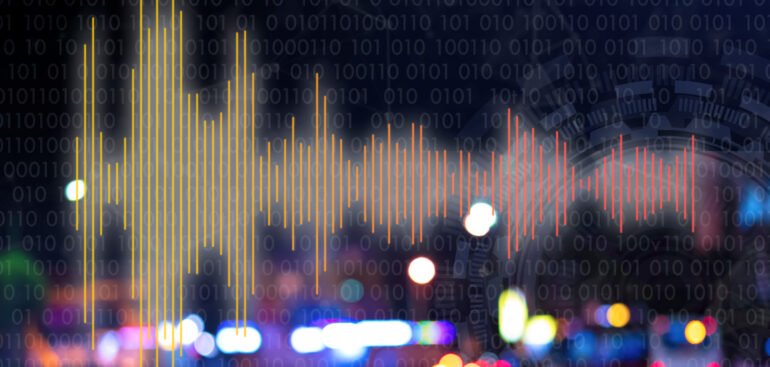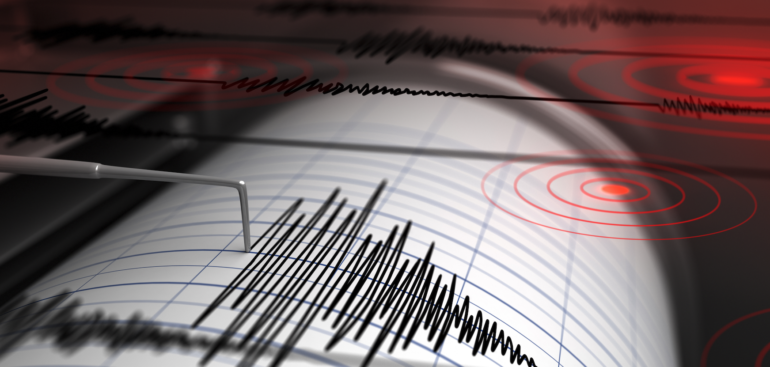Ground vibrations can arise from various sources such as construction activities, heavy machinery, or blasting operations. These vibrations can significantly impact buildings and structures, both in terms of structural integrity and human comfort. At QuakeLogic, we employ advanced techniques and tools like accelerographs and seismographs to measure and record ground vibrations accurately. This blog will delve into the specifics of OCTAVE analysis and vibration data analysis, highlighting the methods and metrics we use to ensure precise vibration assessment and mitigation.
Measuring Ground Vibrations
Ground vibrations on buildings or structures are typically measured outside the structure and at ground level. This approach allows for a comprehensive understanding of how vibrations affect the overall stability and integrity of the structure.
Importance of Frequency Analysis
Frequency analysis of vibrations is crucial for determining the necessary mitigation measures. Third-octave data is particularly useful in specifying the requirements for building foundations, ensuring that structures can withstand the expected vibration levels.
Third-Octave Analysis Metrics
The third-octave analysis involves computing the following key metrics:
- Vibration Dose Value (VDV)
- Peak Particle Velocity (PPV)
- Dominant Site Frequency
Vibration Dose Value (VDV)
Vibration Dose Value (VDV) combines the magnitude of vibration and the duration of exposure. It measures human exposure to vibration within structures, particularly buildings. VDV quantifies vibrations as an exposure dose based on frequency (4.5 Hz to 80 Hz), amplitude, and regularity.
Formula for VDV:

where:
- VDV is the vibration dose value in m/s(^{1.75})
- ( a(t) ) is the acceleration in m/s(^2)
- ( T ) is the total measurement period in seconds
The VDV formula uses the root-mean-square acceleration raised to the fourth power, known as the root-mean-quad method, making it highly sensitive to peaks in acceleration levels.
Peak Particle Velocity (PPV)
PPV measures the maximum instantaneous velocity of ground particles and is expressed in mm/s. It refers to the internal movement of molecular particles within the ground rather than surface displacement. Typical environmental ground vibrations range from 1 Hz to 200 Hz.
Sources of ground vibrations at construction sites include pile driving, dynamic compaction, blasting, and heavy equipment operation. These vibrations can range from disturbing residents to causing visible structural damage.
Dominant Frequency
Fast Fourier Transform (FFT) and Power Spectral Density (PSD) are powerful tools used to convert vibration signals from the time domain to the frequency domain. FFTs are suitable for analyzing vibrations with dominant frequency components, while PSDs are ideal for characterizing random vibration signals like ambient measurements.
Human Comfort and Noise Determination
Human comfort is significantly impacted by vibrations and noise. Vibrations can cause discomfort, annoyance, and even health issues for occupants of buildings. By conducting detailed OCTAVE analysis, we can determine the levels of vibration that affect human comfort and establish mitigation measures to reduce these impacts.
Noise and Human Comfort:
- VDV is used to quantify the vibration exposure that affects human comfort, particularly in residential and office buildings.
- PPV and dominant frequency analyses help in understanding the specific sources of vibration and noise, allowing for targeted mitigation strategies.
- Standards like ISO 2631-2:2003 “Mechanical vibration and shock – Evaluation of human exposure to whole-body vibration” provide guidelines for acceptable vibration levels to ensure human comfort.
Measurement Methodology
Standards and Reference Guides
- British Standard BS 6472-1:2013: Guide to evaluation of human exposure to vibration in buildings – Vibration sources other than blasting.
- British Standard BS 7385-2:1993: Evaluation and measurement for vibration in buildings – Guide to damage levels from ground-borne vibration.
- International Standard ISO 4866:2010: Mechanical vibration and shock measurement – Vibration of fixed structures – Guidelines for the measurement of vibrations and evaluation of their effects on structures.
- International Standard ISO 2631-2:2003: Mechanical vibration and shock – Evaluation of human exposure to whole-body vibration – Part 2: Vibration in buildings (1 Hz to 80 Hz).
- International Standard ISO 5348:1998: Mechanical vibration and shock – Mechanical mounting of accelerometers.
- DIN 4150-3:1999: Structural vibration – Part 3: Effects of vibration on structures.
Instrumentation
- VDV Measurements: Made triaxially (X, Y, and Z axes) across the frequency range of 0.5 Hz to 80 Hz in 1/3-octave bands, following BS 6472-1:2013 guidelines.
- PPV Measurements: Made triaxially across the frequency range of 4 Hz to 250 Hz in 1/3-octave bands, following ISO 4866:2010 and BS 7385-2:1993 guidelines.
Conclusion
Ground vibrations can pose serious risks to structures and human comfort. Through detailed OCTAVE analysis and vibration data analysis, QuakeLogic provides accurate and comprehensive solutions to monitor and mitigate these impacts effectively.
About QuakeLogic
QuakeLogic is a leading provider of advanced seismic and vibration monitoring solutions, offering a range of products and services designed to enhance the accuracy and efficiency of seismic data acquisition and analysis. Our innovative technologies and expert support help organizations worldwide to better understand and mitigate the impacts of seismic events.
Contact Information:
- Email: sales@quakelogic.net
- Phone: +1-916-899-0391
- WhatsApp: +1-650-353-8627
- Website: www.quakelogic.net
For more information about our products and services, please visit our website or contact our sales team. We are here to help you with all your seismic monitoring needs.
Thank you for choosing QuakeLogic. We look forward to assisting you with your seismic monitoring projects.



